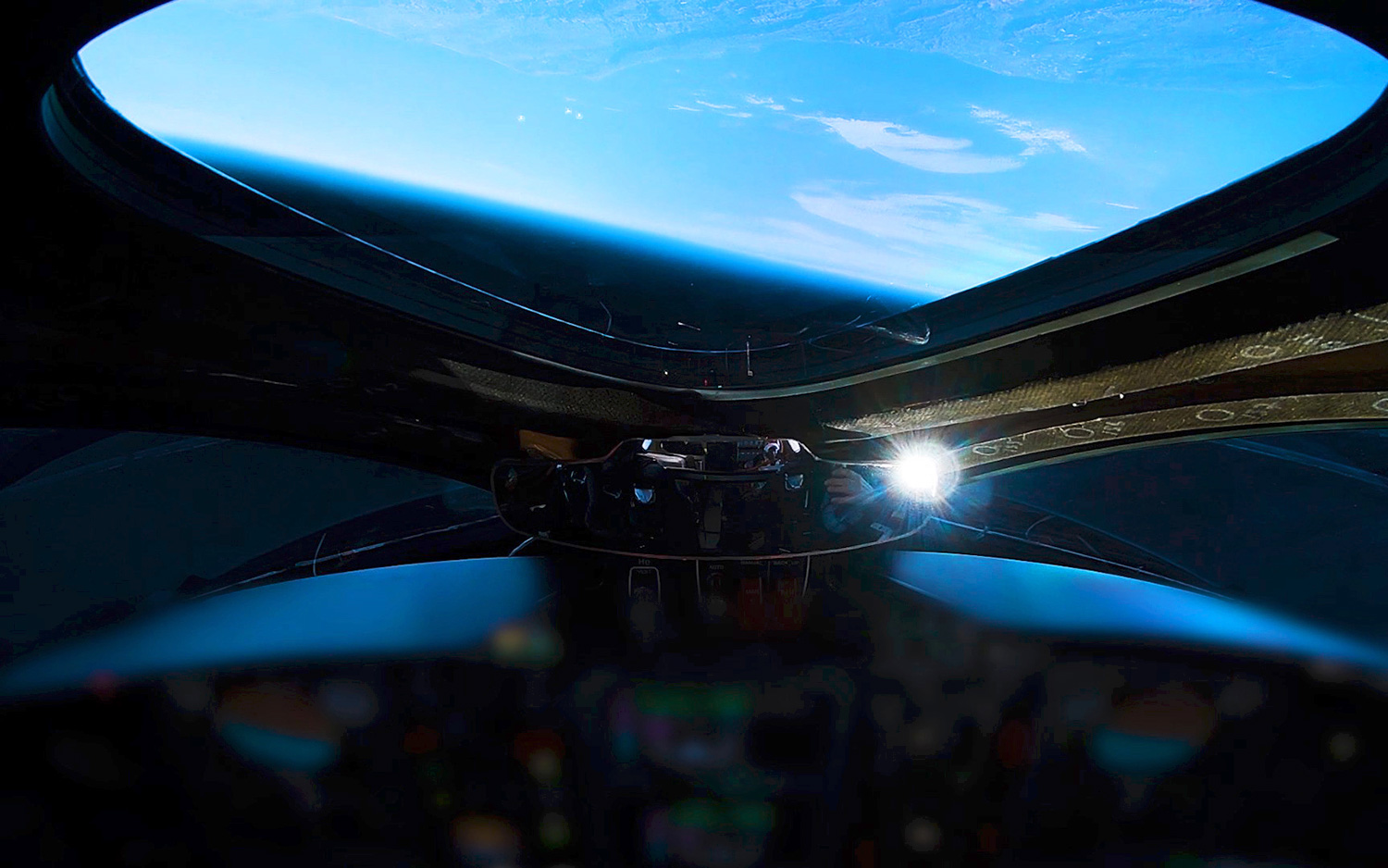Where DOES Space Begin? Virgin Galactic's SpaceShipTwo Flies Right into the Debate
"SpaceShipTwo, welcome to space," reads a triumphant tweet from Virgin Galactic posted during today's successful test flight after the company's vehicle reached 51.4 miles (82.7 kilometers) in altitude.
There's just one little problem: The vehicle fell a whole 11 miles (17 km) short of the height many people use to demarcate space, at 62 miles (100 km). That boundary, nicknamed the Karman line, is often treated as edict, but Virgin Galactic's flight comes in the midst of a new debate about revising that definition.
"There are a lot of people who are just like, 'I like 100 — it's nice and round,'" Jonathan McDowell, an astrophysicist at Harvard University who earlier this year published an article in the journal Acta Astronautica arguing for revisiting the Karman line's definition, told Space.com. "That's the only reason for 100, is it's a nice, round number in metric. There's no physical justification for it." [In Photos: Virgin Galactic's SpaceShipTwo Unity Soars to Space in Test]
McDowell prefered to look toward the historical usage of the term — he said that the earliest written reference he was able to find cited 52 miles (84 km) — and the physical realities of orbit. He took two approaches to examining that last piece.

First, he looked at a database of 90 million orbital paths collected from 60 years of spaceflight, searching for the lowest approaches that were sustainable for multiple orbits. For circular orbits, that line falls around 75 miles (120 km); satellites on elliptical orbits can swing down to 50 miles (80 km).
Those elliptical orbits make leaving the entryway to space at 62 miles (100 km) clunky, to say the least. "Either in the 80s is still space, or you have to say they're in orbit, but they're not always in space when they're in orbit," McDowell said. "Which is annoying."
He added that a more theoretical approach to the problem points to the same answer.
Get the Space.com Newsletter
Breaking space news, the latest updates on rocket launches, skywatching events and more!
In this approach, McDowell examined three different profiles of satellites: one that would be tossed around in the atmosphere, one that was stocky like a cannonball, and an intermediate case. Then, he calculated the altitude at which orbital dynamics become more important than aerodynamic forces, depending on a whole range of atmospheric characteristics like density and solar cycle stage. That mathematical approach pointed to between 43 and 56 miles (70 and 90 km) as the boundary.
"The fact that that tradition [of the earliest published value] and the empirical analysis and the theoretical analysis all converge convinces me that 80 [km] is a better number than 100," McDowell said.
His interest in the definition came from compiling lists — each country's first rocket to reach space, astronauts who have flown in space, and the like. Choosing the entries that go on those lists and those that don't make the cut requires a definition to work from.
"For historians, we talk about space, we talk about spaceflight — well, we should know what it is, what do you mean when you say space," McDowell said. "It's helpful to have a boundary, even if it's an arbitrary one."
And, hey, if you're dealing with arbitrary definitions anyway, you may as well take advantage of one that gives you better bragging rights.
Email Meghan Bartels at mbartels@space.com or follow her @meghanbartels. Follow us @Spacedotcom and Facebook. Original article on Space.com.
Join our Space Forums to keep talking space on the latest missions, night sky and more! And if you have a news tip, correction or comment, let us know at: community@space.com.

Meghan is a senior writer at Space.com and has more than five years' experience as a science journalist based in New York City. She joined Space.com in July 2018, with previous writing published in outlets including Newsweek and Audubon. Meghan earned an MA in science journalism from New York University and a BA in classics from Georgetown University, and in her free time she enjoys reading and visiting museums. Follow her on Twitter at @meghanbartels.









